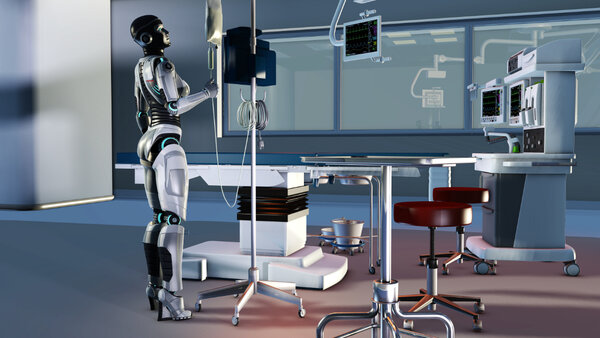
Digitalization is gaining momentum in medicine and healthcare. Digital applications have great potential for the prevention, diagnosis and therapy of diseases. In addition, digitized processes can be used to optimize ongoing treatments. This starts in the GP's practice and extends to the hospital if treatments or even operations should become necessary there. Digitalization leads to leaner and more transparent processes in the healthcare sector. This results in cost reductions, faster and more well-founded diagnoses, improved treatment quality and, finally, better utilization of resources and equipment.
IoT revolutionizes network infrastructure in hospitals
Modern medical care is based on smart real-time applications. IoT and the associated focus on networking, security, scalability and sustainability play a decisive role, especially in the hospital environment.
A hospital is a complex structure, in which various administrative tasks are integrated as well as different treatment processes, some of which extend across various medical departments. To ensure smooth processes, data must be collected, processed and kept in stock. Low latencies as well as fast analyses and decision options on site are essential for doctors and nursing staff. An important criterion is not least the security of sensitive patient data.
With the Embedded Cloud, Kontron, together with S&T, has established a new cloud class that sets new standards in the healthcare environment. The Embedded Cloud is explicitly oriented to the requirements of the Medical 4.0 concept for the networked hospital. These include: low latencies, fast analyses and on-site decisions as well as a high level of security. For this purpose, the systems involved in the medical care process on the hospital premises are combined to form a local network. The IoT Software Framework SUSiEtec from S&T Technologies, Kontron's sister company within the S&T Group, is used at the interface between medical devices and the cloud. It is the link between the devices, converts protocols, filters data and, if necessary, processes them directly on site.
SUSiEtec allows hospitals to take a hybrid and scalable approach to their IoT scenarios by combining the benefits of on-premise solutions with a professional cloud infrastructure. Therefore, SUSiEtec is fully integrated with Kontron's Gateway, Edge, Fog, Computer and Server products, many of which are already certified for Microsoft Azure IoT Services. SUSiEtec can also be used independently of Kontron systems with devices from other vendors and in conjunction with cloud architectures that are already in use at the respective customer.
Edge- and Fog-Computer/Systems in interaction
The embedded cloud consists of Edge and Fog Computers/Systems. Edge computers are end devices such as ultrasound and ventilators or op-robots, to name just a few medical components. Sensors and actuators are connected to these devices to collect, process and analyse data. For CTs and MRTs, the images are processed directly in these devices for immediate diagnosis.
Fog computers include image processing workstations, for example. They perform further renderings and 3D simulations based on the pre-processed image data and store the data locally. For this purpose, all imaging devices of a department or station are connected to these computers. Via a connection to the servers in the hospital IT, the data is stored there for a long time, anonymized and used for further evaluations.
Predictive maintenance can save lives
With the help of predictive maintenance, medical devices in the Embedded Cloud can also be maintained in good time or, if necessary, replaced promptly. This can save lives. Predictive maintenance is one of the core components of the Medical 4.0 concept. All connected devices are proactively maintained to keep downtimes as low as possible. This option allows faults to be predicted and rectified before they affect hospital operations or the condition of patients. Reliable predictive maintenance is based on reliable data that must be collected, stored and analysed. The collected and evaluated measured values and diagnostic data are transmitted directly to the service center or the device manufacturer. Thanks to predictive maintenance, the medical device calls the service technician before a defect occurs. This saves costs, reduces the risk of failure and thus makes the networked operation of medical equipment safer.
In your opinion, will medicine 4.0, telemedicine and IoT significantly change the healthcare system?
Will digitalization lead to a "domination of devices" and a dehumanization of medical treatment? Or will modern technology give medical staff more time for patients again? What do you think?
Cover picture: Adobe Stock @pgottschalk

{{comment.comment}}